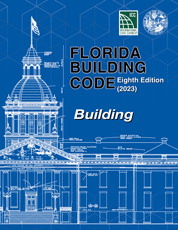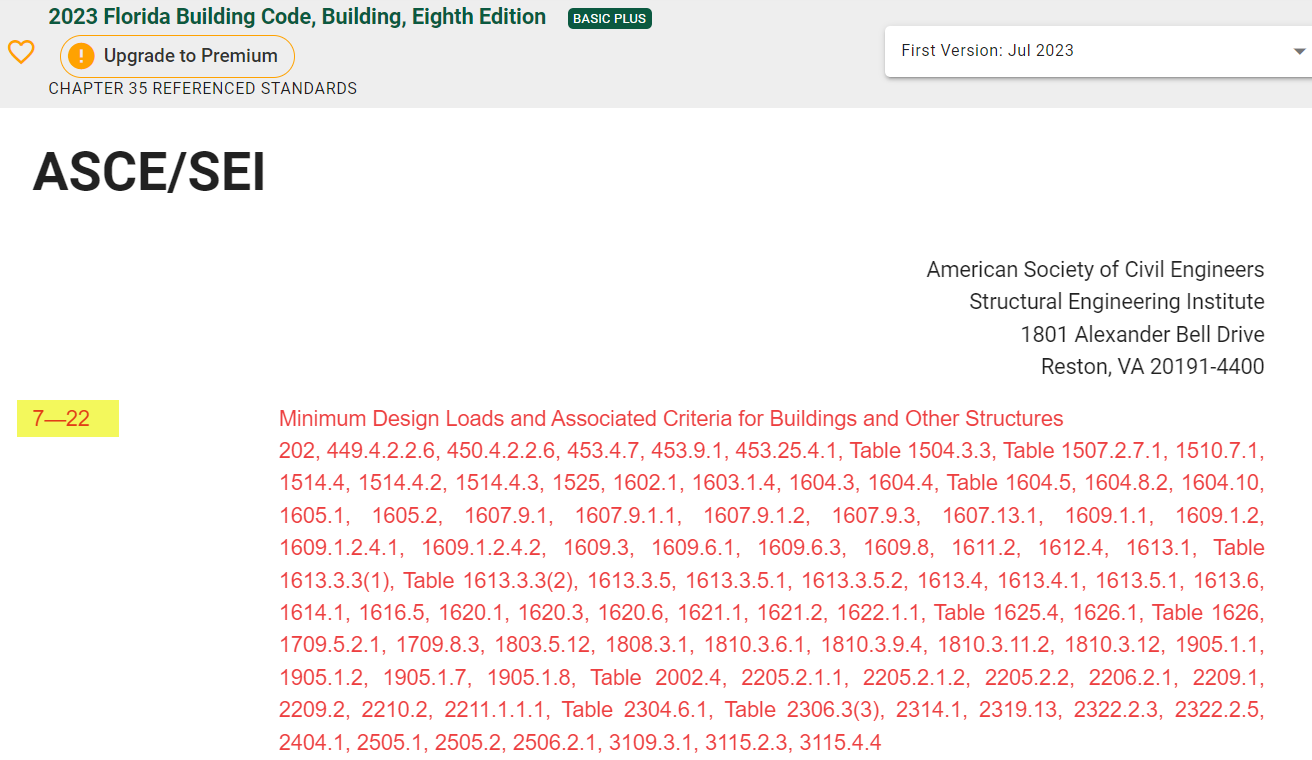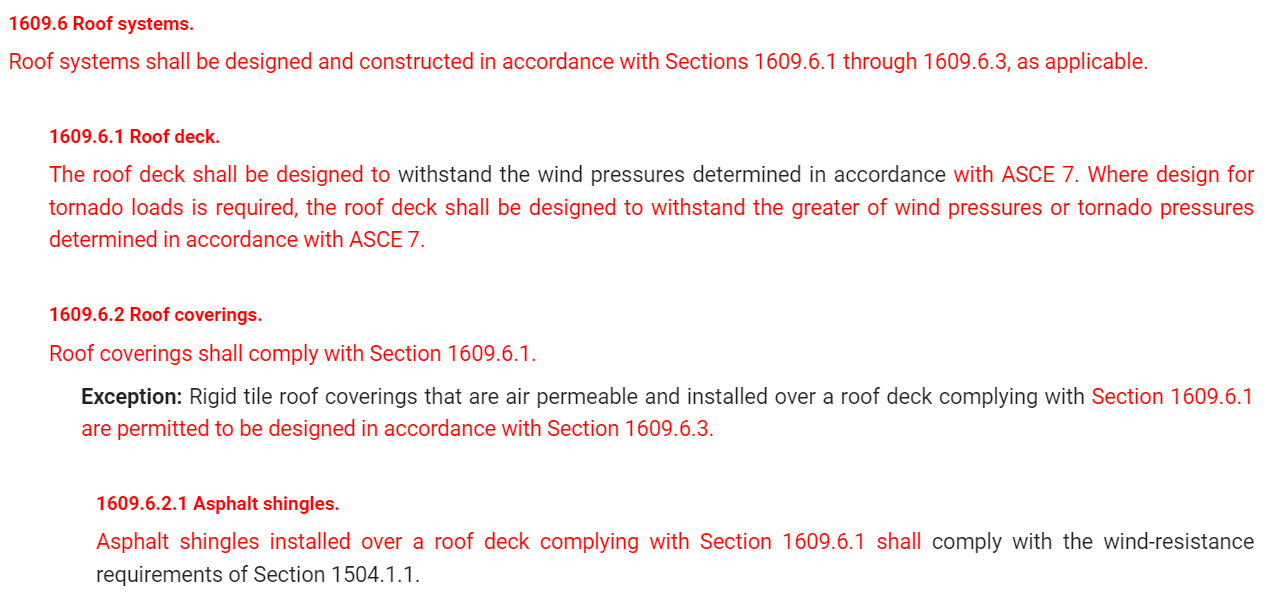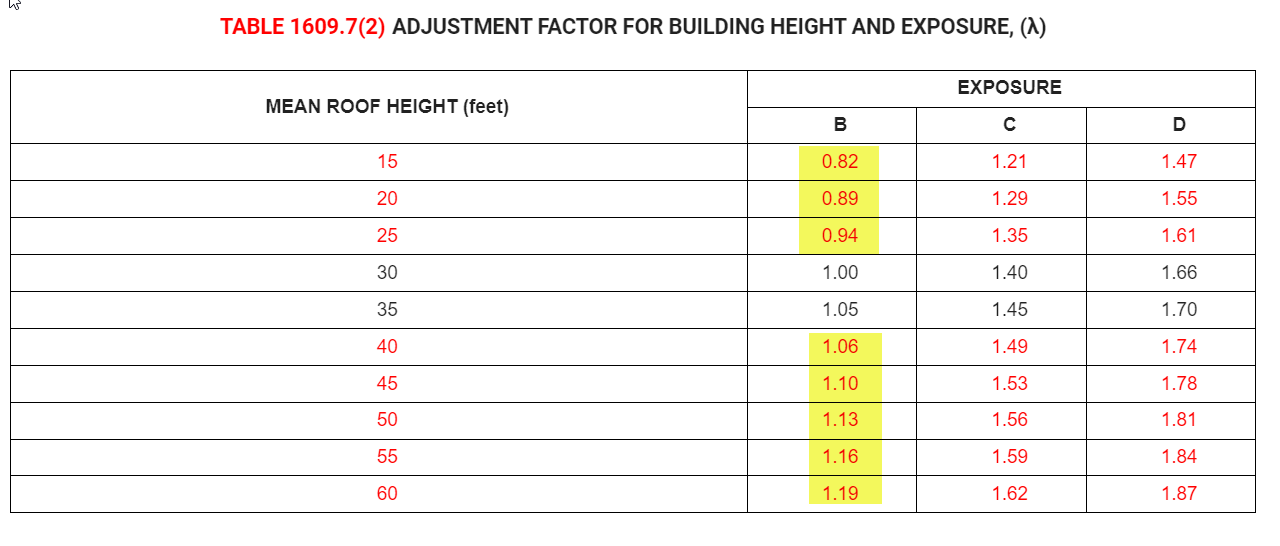2023 Florida Building Code 8th Edition

The Florida Building Code (FBC) has released the 2023 8th Edition, and the most significant change is that it now references ASCE 7-22 rather than ASCE 7-16. We have already summarized the major changes made in ASCE 7-22 in this article link. There were some minor changes in FBC 2023, and we will summarize those in this article.
Note: Meca is in not on any committees nor do we have any part in the creation of the FBC 2023 as it relates to wind, we just offer our observations on the changes in the document.
Florida Building Code 2023 / 8th Edition
According to floridabuilding.org the 8th edition (2023) of the Florida Building Code will go into effect December 31, 2023. An online copy of the 2023 Florida Building Code 8th Edition is available at this link.
When reviewing the online version of FBC 2023 all changes are indicated by red text. There are lots of minor changes and/or corrections of wording, and we won’t attempt to summarize all of those changes since they can more readily be seen by reviewing the the document. Here we will summarize the major changes that would affect actual calculated wind pressures:
2023 FBC 8th edition now references ASCE 7-22 for loading

Tornado Loads
The ASCE 7-22 standard introduced Chapter 32 which addresses Tornado Loads. In FBC 2023 Sec 1609.6 ‘Roof Systems’ the Florida Building Code added some new language with regard to Tornado loads:

Rigid Tile (Kd)
Some changes were made to the calculation of uplift moment on rigid tiles. There is a parameter Kd ‘Directionality Factor’ that was included as part of the qz velocity pressure calculation up until ASCE 7-16. In ASCE 7-22 the Kd was removed from the qz calculation, and placed in the pressure and force calculation. You may refer to this article for more detail on that change. This now impacts the rigid tile calculation because they made the same change, the removed Kd from the qh calculation and placed it the actual Moment calculation. Although the formula is slightly different, the net result has no impact on the final result you calculate.

Rigid Tile (Tornado Loads)
When tornado loads are applicable, FBC 2023 now gives a method by which to calculate the Tornado uplift moment on a Rigid Tile. The designer must then use the worse of the wind or tornado wind loads. Please note that if you are a MecaWind user and have the Ultimate version, then the software will automatically calculate the Tornado wind loads when applicable.

Garage & Rolling Doors Adjustemnt Factors Changed for Exposure B
FBC 2023 has revised the Adjustment Factor for Garage Door and Rooler Door Calculations. These changes were only made to some of the values provided for exposure B.

MecaWind Pro Software includes 2023 Florida Building Code 8th Edition
MecaWind now includes the 2023 Florida Building Code 8th edition, as long as you have the Pro or Ultimate (for Tornado loads) version of the software. As noted above, as long as you are following ASCE 7-22 (which is included in the Standard version), then you are essentially meeting 2023 FBC. There are a couple of exceptions:
- The wind maps are more detailed than ASCE 7-22 and specific for the state of Florida in 2023 FBC 7th edition.
- There is a special calculation for “Rigid Tile” in Section 1609.6.3 of 2023 FBC 8th edition (method existed in 2020 FBC 7th edition, but has been revised to include Tornado Loads).
- There is a special calculation method for Garage and Rolling Doors in 2023 FBC 8th edition (method existed in 2020 FBC 7th edition, but some modifications have been mode to the adjustment factors for Exposure B).
- Tornado loads are only included int he Ultimate version.
If you are using MecaWind Pro or Ultimate (for Tornado loads) then all of these differences are already accounted for in the software. When you select FBC 2023, there will be an option for rigid tile and also garage doors. If you are calculating wind loads on any other structures or buildings (i.e. not rigid tile or garage/rolling doors) then the only difference between selecting FBC 2023 and ASCE 7-22 in the software is that the reports will reference the standard selected. Ultimate is required for Tornado load calculations. The calculations will be identical since FBC 2023 is following ASCE 7-22 for the calculations.
